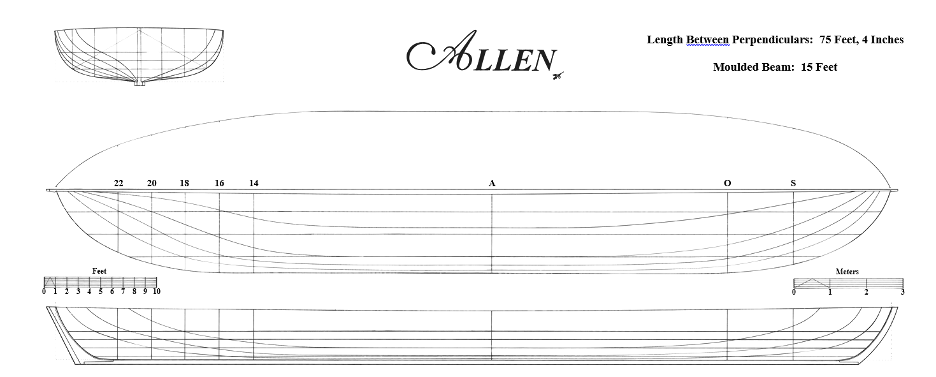Row Galley Allen Collection

Collection Summary
- Dates: 1814
- Size: 1 box of artifacts and associated fieldwork and conservation records
- Media: paper; drafting film; photographs; archaeologically recovered material (textile; rope; bone; antler; glass; ceramics; wood; iron; brick; stone; pewter; copper)
- Language: English
- Subjects: War of 1812
- Related Publications: The Last of Mr. Brown’s Mosquito Fleet: A History and Archaeology of the American Row Galley Allen on Lake Champlain, 1814-1825 (Emery and Texas A&M, 2003)
- Access and Use: Some materials in the Row Galley Allen Collection are extremely fragile and should be handled with care.
Scope and Content
The Row Galley Allen Collection consists of the assembled archaeological research files and excavated artifacts from the 1995 archaeological study of the hull of Row Galley Allen, an American vessel from the War of 1812. Two hundred and seventy four artifacts were documented, and approximately half were redeposited on the site. In addition to the retained artifacts, the Row Galley Allen Collection contains archaeological field notes, drawings, inkings and photographs of the site. Retained artifacts of note include an iron knife blade; a copper button; possible whetstone; a possible gunflint; a wood gaming piece; several pieces of various types of fasteners (mostly iron spikes and iron nails, amongst the occasional copper tack); and several pieces of various types of ammunition.
Together these materials tell some of the still-emerging story of the War of 1812 on Lake Champlain. Several warships, including the Allen, were built on or near Lake Champlain in the spring of 1814 to engage in the Battle of Plattsburgh Bay on September 11, 1814. The Allen was among the vessels placed in ordinary at Whitehall, NY, by the American victors at the war’s end. Some gunboats and sloops were sold out of the service after 1814. By the year 1820 most of the remaining fleet were rotting so badly that the Americans abandoned them at the mouth of the Poultney River. Those that survive as extant shipwrecks to the present day, Allen, Linnet, and Eagle, were archaeologically examined and excavated as part of the Poultney River Graveyard Project in 1995. The archaeological collections and field notes from this research are in the Museum’s collections. Recovered archaeological artifacts were conserved in-house at the Museum.
Citation Recommendation
Row Galley Allen Collection, Lake Champlain Maritime Museum, Vergennes, VT.
Keywords
War of 1812; archaeology; Plattsburgh Bay; Allen; Museum-generated research; Museum-conserved artifacts
